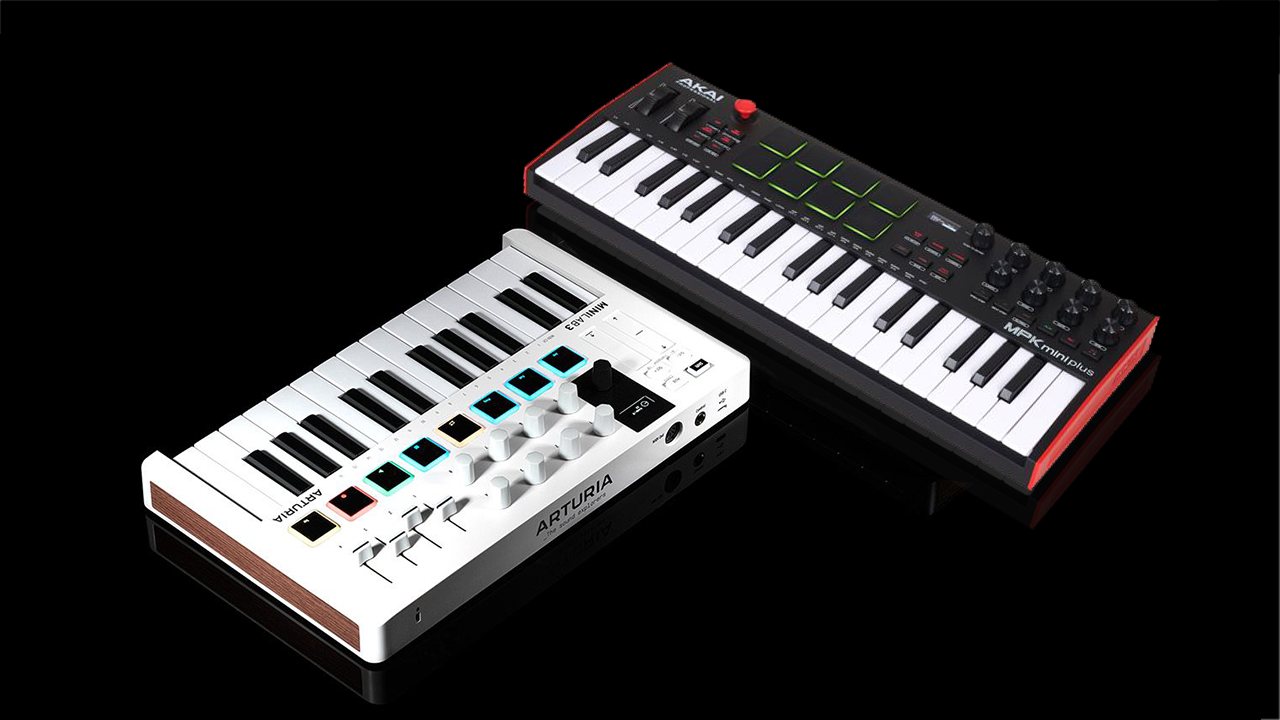The Minilab 3 from Arturia is their take on making and enjoying music while using a plug-and-play keyboard that essentially does it all. With easy controls, keys that feel great to the touch, and a fully integrated software package, it really does feel like the complete package, or does it?
Because on the other side, we have the MPK Mini Plus from AKAI, an instrument that empowers musicians and Live Performers by giving them creative controls, next-gen performance tools, and advanced connectivity. With both of them being so good in their field, it’s harder to make a choice between them.
Arturia MiniLab 3 vs AKAI MPK Mini Plus
Arturia MiniLab 3 vs AKAI MPK Mini Plus – The Better MIDI Keyboard will point you toward the comparatively better plug-n-play MIDI keyboard. Bearing similar specs that’d make a choice between them pretty complicated, which one of these MIDI keyboards should you actually go for?
Design and Appearance
While not on the same level as the MiniFreak Synthesizer, the Minilab 3 from Arturia comes in a tiny, compact package with a reasonable impact. The latest iteration of this keyboard received a massive overhaul with a couple of faders, an OLED display, and an impressive software package. Being released six years after the famous MiniLab Mark 2, the Minilab 3, in order to stay one step ahead of the competition, came up with a new design that has rounder corners slightly in comparison.

And in terms of color options, instead of the glossy white version of the mark 2, Arturia has decided to launch the Minilab 3 with a visually pleasing black palette they like to call “Black Noir”.
In comparison, the AKAI MPK Mini, when compared to its predecessor the regular MPK Mini, comes with a larger keyboard alongside a built-in polyphonic step sequencer, CV/Gate, and analog sync jacks. As always, AKAI still holds on to a reliable reputation for providing the best-in-line keyboard controls for modular synths. And combine that with AKAI Professional’s strong track record, there’s no reason for you to expect any less.
Features
Speaking of, according to Arturia, the Minilab 3 comes built-in with pre-configured mapping and scripts for most DAWs, making things even easier regardless of software compatibility. You’ll also be getting an arpeggiator and chord mode, the lack of features that were painfully persistent in the previous generation. Apart from that, most of the features don’t see that much of an overhaul except the new 5-pin MIDI output alongside the USB-C port, making the MIDI keyboard a bit less reliant on computers.

On the flip side, one of the most exciting features of the AKAI MPK Mini Plus keyboard is the new built-in step sequencer. Offering two polyphonic tracks with step and real-time recording modes, you’ll be getting up to eight different voices of Polyphony for keyboard tracks alongside 16 notes per drum step. Additionally, you’ll be getting access to a built-in arpeggiator that allows even more fluidity and movement. The connectors at the back are also pretty generous in terms of connectivity, since alongside the USB and Sustain Pedal connectors like their predecessor the MPK Mini. And if that wasn’t enough, you’ll be getting CV/Gate Outputs with Clock I/O, ensuring the keyboard connects directly to your modular or analog synthesizers without any issue.
Which MIDI Keyboard Should You Choose?
In short – Arturia Minilab 3, alongside its new faders, an OLED display, and an impressive software package, made sure that it’s a massive upgrade from its predecessor, and anyone who’s familiar or in tune with previous Arturia models will have an amazing time with it. However, its 8 of the predecessor’s 16 rotary encoders were removed and have been replaced by four sliders instead. While they are somewhat convenient for controlling things such as mixers and envelopes, this does not hide the fact that the MiniLab 3 offers a lot fewer physical controls. On the other side, AKAI has come up with a controller that has what it takes the give its competition a serious run for their money. Since it comes with a lot more physical control, an extra sequencer track, a pair of wheels, AND eight additional MPC pads, while costing way less.







